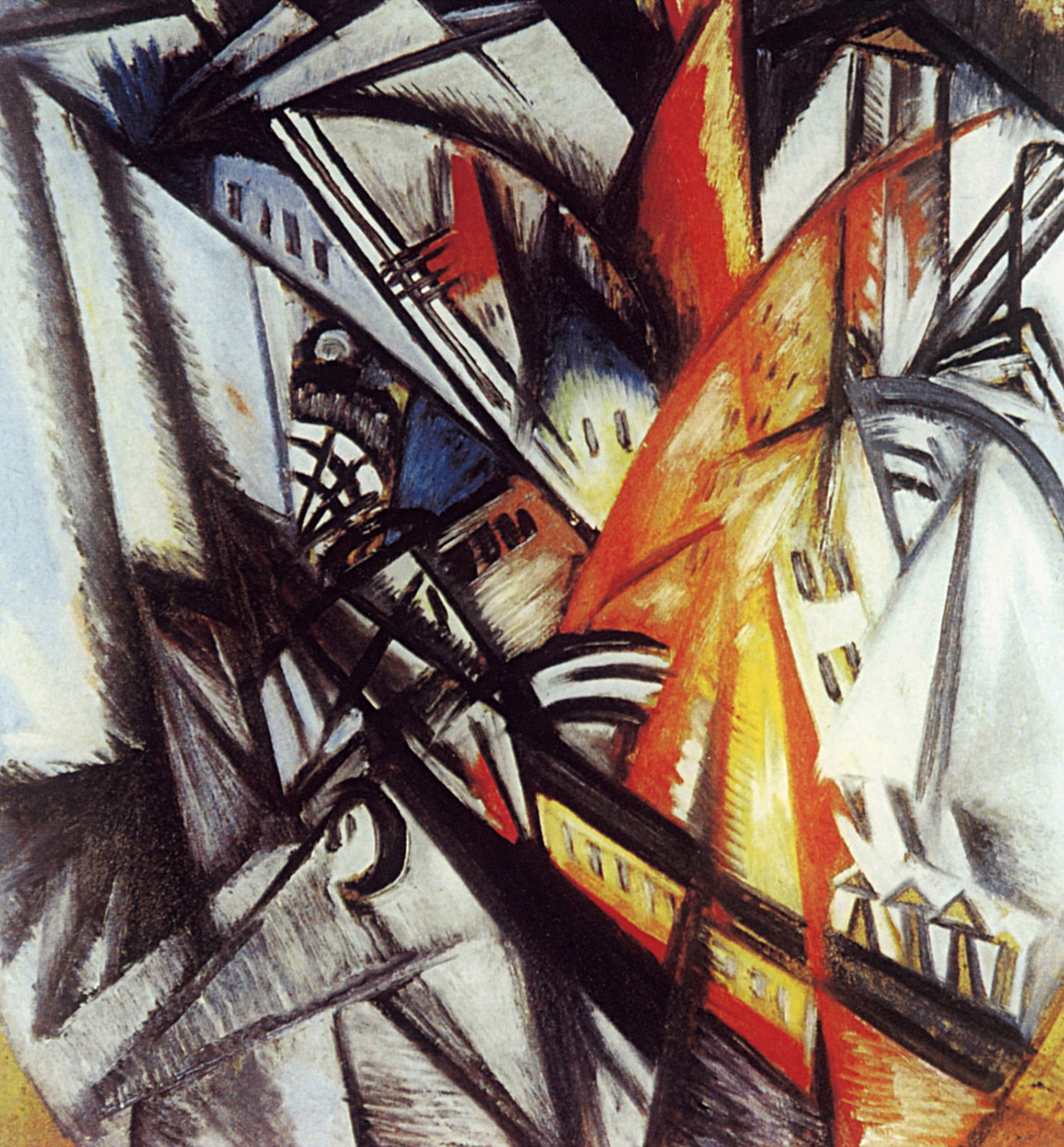… We propose liberating painting from its subservience to the ready-made form of reality and to make it first and foremost a creative, not a reproductive, art.
The savage happily drawing the outlines of a bull or a deer on a piece of stone, the primitive, the academician, the artists of antiquity and of the Renaissance, the Impressionists, the Cubists, and even to some degree the Futurists are all united by the same thing: the object. These artists are intrigued, delighted, amazed and gladdened by nature. They try to fathom her essence, they aspire to immortalize her …

Cubism killed the love of the everyday appearance of the object, but not the love of the object as a whole. Nature continued to be the guide of aesthetic ideas. The works of the Cubists lack a clearly defined idea of non-objective art.
Their art is characterized by efforts to complicate the task of depicting reality. Their complaint against the established prescriptions for copying nature turned into a formidable bomb that smashed the decayed metaphysics of figurative art into smithereens – an art that had lost all idea of aim and technique …
In its force and its clarity of perception, Futurism provided art with a unique expression – the fusion of two worlds, the subjective and the objective. Maybe this event is destined never to be repeated.
But the ideological gnosticism of Futurism had no effect on the damned consciousness of the majority who, to this day, continue to reiterate that Futurism marks a radical break in the course of world art, a crisis of art …
Our time is one of metal, its soul is initiative and technology: the Futurists brought technology to its full potential …
Until the Futurists came along, artists used to express movement in the following conventional manner: a maximum expression of movement resulted from placing forms on the surface of the canvas parallel to the perimeter of the canvas, and a maximum static expression resulted from the placing of the forms parallel to the surface of the canvas.
The spectator did not sense movement in the picture. All he saw was a rendering of movement …
For the Suprematists, the painting has ceased, once and for all, to be a function of the frame.
We do not regard the forms that we use as real objects. We do not force them to depend on the up and down directions in the painting … We consider their painterly content.
Consequently, the emphasis on symmetry or asymmetry, on static or dynamic elements, is the result of creative thinking and not of the preconceived notions of common logic. The aesthetic value of the non-objective painting lies entirely in its painterly content.
We perceive the colour of an object as its hue made visible by the refraction of light (the rainbow, the spectrum). But we can also conceive of colour independently of our conception of the object, and beyond the colours of the spectrum.
We can see green, blue and white mentally …
The unreality of the Cubo-Futurists was a product of their self-destructive desire to convey the total reality of the object via the prism of pure subjectivity. This was so remarkable that ‘non-existence’, created by the artist’s will, acquired the value of a new reality, of a kind of abstract absolute that killed any interest in what was actually being observed …
Suprematism rejects the use of real forms for painterly ends. Like leaky vessels, they cannot hold colour. Stifled by the chance simplicity or complexity of these forms, which may not always correspond to their respective colour content, colour just creeps about, faded and dim … We create quality of form in connection with quality of colour, and not each separately.

We have chosen the plane as the transmitter of colour, since its reflective surface will transmit the colour the most effectively and with the least mutability. As a result, reliefs, appliqués, textures that imitate material reality, and sculptural effects (for example, a brushstroke creates shadow), which were used in figurative painting (right up to, and including, Futurism), cannot be applied to two-dimensional painting on a plane: such factors influence and change the essence of colour …
Just as change in the atmosphere can create a strong or weak air current in nature, one can overturn and destroy things, so dynamism in the world of colours is created by the properties of their values, by their weight or lightness, by their intensity or duration. This dynamism is, essentially, very real. It commands attention. It engenders style and justifies [the] construction.
Dynamism liberates painting from the arbitrary laws of taste and establishes the law of pragmatic inevitability. It also liberates painting from utilitarian considerations …
The works of pure painting have the right to exist independently and not in relation to banal interior furnishings. To many, our efforts and endeavours – as well as those of our Cubist and Futurist predecessors – to put painting on a course of self-determination may seem ridiculous, and this is because they are difficult to understand and do not come with glowing recommendations. Nevertheless, we do believe that a time will come when, for many people, our art will become an aesthetic necessity – an art justified by its selfless aspiration to reveal a new beauty.
Olga Rozanova

